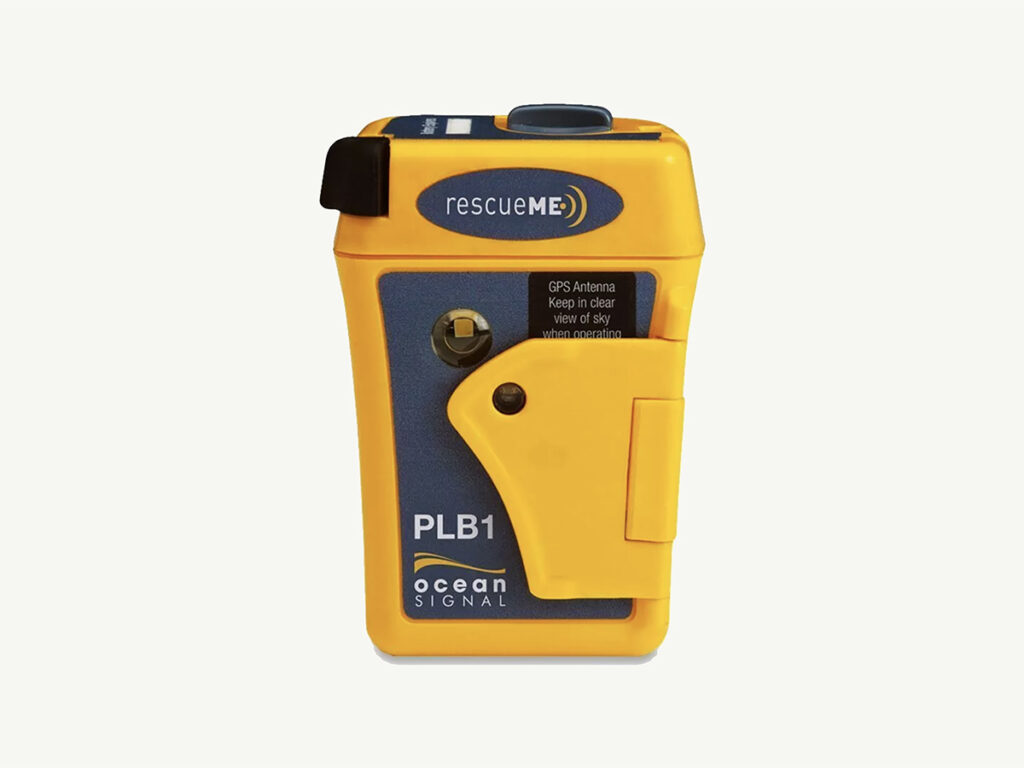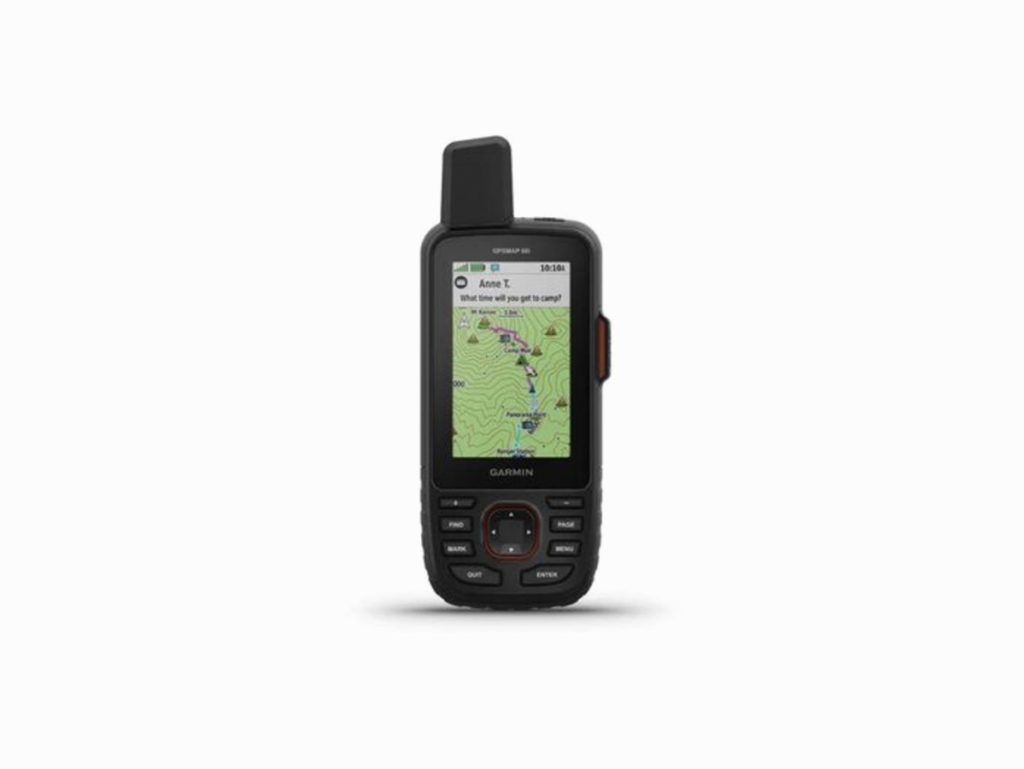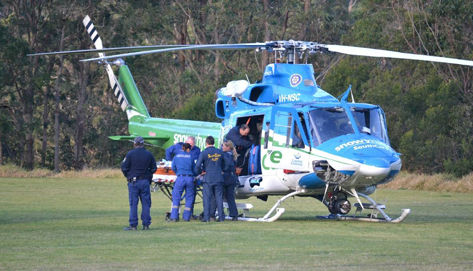Technology on the trail: Personal Locator Beacons
Safety
The use of technology on the trail is a controversial topic that can generate heated conversations over the pros and cons of the different technology types as well as the impact on the hiking experience in general. A prime example was a recent Facebook survey we ran on whether or not hikers use Personal Locator Beacons (PLBs). While I’ll discuss the results of this survey in this article the passionate debate that went on in the background surprised me with people presenting a variety of views on the topic. This article will provide a basic overview of what PLBs are, how they work and how and when to use them.
You can also listen to podcast episode 24 on PLB’s
What is a Distress Beacon?
A distress beacon is an electronic device that, when activated in a life threatening situation, assists rescue authorities in their search to locate those in distress. From a hiking perspective PLBs are relatively lightweight and small, and will fit into your pocket or clip to your pack/belt very easily.
Locator Beacons
- PLB (Personal locator Beacon) is for personal use by bushwalkers, 4WD drivers, other adventurers on land, employees working in remote areas, and crew in boats and aircrew. This type of beacon is becoming a multi-environment beacon
- EPIRB (Emergency Position Indicating Radio Beacon) is usually for use on water
- ELT (Emergency Locator Transmitter) is usually for use on aircraft. However, EPIRBs and PLBs can be carried in place of an ELT
The benefit of this type of beacon is that once you purchase one the battery will usually last for at least 5 years and in the case of hiking PLB’s up to 10 years so you will when you factor the cost of the beacon the price works out at around $40/year.

Ocean Signal RescueMe PLB1, just one of the PLB’s currently available

EPIRB example
Two Way Communication Devices
The Garmin Inreach Explorer+ is not a dedicated PLB but rather a GPS and Personal locator beacon all in one. It allows two way communications with the emergency management centre however is dependant on being recharged. Emergency contact is initially though the USA who will then advise AMSA of the issues. The Garmin units are becoming more common throughout Australia and is now my personal beacon choice.
The downside of this type of unit is the initial purchase cost of AUD $799RRP as well as the ongoing annual subscription service to operate. In my case my annual subscription fee sits just under $400 9which includes a couple of big hikes but for that my wife can follow me on my day/multi-week solo hikes by use of the online map. Even when in remote areas with no phone signal we can communicate by satellite text messages.

Garmin GPSMAP 66i Handheld Hiking GPS & Satellite Communicator
How do Beacons Work?
When activated, beacons transmit a signal that can be detected worldwide by the international satellite system, Cospas-Sarsat. The signal is detected by a Rescue Coordination Centre to coordinate a response. Your beacon can be activated from anywhere on the Earth’s surface, regardless of whether you were travelling by air, land or sea.
Satellites cannot detect beacons through mountains, trees or buildings. If your beacon has not been deployed correctly with the aerial vertical in a clear open area or you are in a valley, geostationary (GEO) satellites are unlikely to see you. In these cases, you must wait for polar-orbiting (LEO-Low Earth Orbiting) satellites to pass overhead, which may take several hours.
Another important factor, which determines how long your rescue takes, is if you have a Global Positioning System (GPS) beacon or a non-GPS beacon. Beacons manufactured in Australia are GPS beacons.
When you purchase a beacon ensure that you thoroughly read the instructions and know how to use it. I do this annually as well as doing a device test to ensure that it still works. I also make sure my hiking partner knows were the beacon is and how to use it.
How Long does it take to be Rescued after Activation?
The time it takes for rescue personnel to reach you depends on several factors including the weather, terrain, accessibility of your location, and availability of rescue resources at the time of your incident. The more remote the location of the distress incident, the longer the response time.
What this means is that while emergency services will get to you as quickly as possible, you or your group will need to manage the emergency situation as best you can until they arrive. When planning your hikes, ensure you have considered all the possible scenarios and have emergency plans in place as best as you can.

Snowy Hydro rescue helicopter based in Canberra and services much of southern NSW. Photo courtesy of Narooma News
Buying a Beacon
The Australian Maritime Safety Authority (AMSA) website contains a list of beacons that meets Australian Standards – the information can be found at http://beacons.amsa.gov.au/about/beacon-types.asp#epirb2. Beacons manufactured to Australian Standards will meet your needs as a hiker. In addition to standard PLBs there are beacons that have two way communication options e.g. Garmin GPSMAP 66i Handheld Hiking GPS & Satellite Communicator
Registering and Updating your Beacon
Dedicated Personal Locator Beacons purchased within Australian are registered with AMSA and this allows search and rescue organisations to contact your designated emergency contacts if and when you set off your beacon. This means that providing you have kept your details up to date, any potential rescue is likely to be quicker. Beacon registration lasts for two years and is free of charge. Remember the following:
- Re-register every two years (before the current expiry date). If you have updated your beacon details within six months of expiry AMSA will automatically renew your beacon and contact you with a confirmation
- Update trip details every time to go out and ensure they are detailed enough to assist anyone searching for you
- Ensure you have let your emergency contacts know what you are doing

AMSA Bracon registration page
Beacon Disposal
You should advise AMSA of beacons that have been sold, lost or disposed of. Do not throw away beacons without first disconnecting the battery.
Can I take my Beacon Overseas?
You can take your beacon overseas. Before doing so, contact your chosen airline for guidance on carrying distress beacons as every airline and airport has different requirements. At the time this article was published, Qantas didn’t need to approve the carrying of PLBs in cabin or in checked luggage. Both Jetstar and Virgin didn’t identify these devices specifically but reverted to the regulations published by the Civil Safety Aviation Authority, which limits the battery size in these devices. Some countries consider PLB carriage and activation illegal on land. AMSA recommends contacting search and rescue authorities in the country in which you are travelling.
When should you carry a Beacon?
In a perfect world hikers shouldn’t undertake activities that exceed their skill levels unless they are with someone to provide that skill and knowledge but we know that this happens. What we have no control over is accidents. Being bitten by a snake, tripping and seriously injuring yourself, unexpected medical conditions, are all things for which hiking experience levels can’t compensate. In addition what happens if the experienced group leader is the one who has an issue and all there is to help is a group of inexperienced hikers?
PLBs aren’t really one of those pieces of equipment you discuss ad nauseam with your friends while sitting around the fire at night but the beacons produced to meet Australian Standards are all pretty robust, reliable, and lightweight.
In a recent poll we conducted the results showed that 29% of hikers never used a PLB while 71% used a PLB either all the time or on longer walks. This poll may have been representative of the walking people do. I carry a beacon in the following instances:
- On all hikes, regardless of group size where I know that my mobile phone doesn’t work
- On solo hikes outside of urban areas even when my phone does work
- When travelling alone particularly in areas where you will not see anyone for days at a time or when you are too far away to get to help, an emergency beacon is an extra piece of security.
When do you Activate a PLB?
This is probably one of the biggest causes of debate between hikers. The correct answer is:
‘If two-way communications are not available, then a distress beacon should be activated in situations of grave and imminent danger. This equates to when you feel you are facing a life threatening situation. This is a personal decision that is different for everybody’ (AMSA, 2017)
As indicated by AMSA, what you as a hiker consider to be a life threatening situation is a personal decision. So what does this mean?
There have been many cases around the world where hikers have set off beacons for frivolous reasons. Examples of this have been ‘I was too tired’ or ‘I ran out of food’. My favourite was a cow in central Australia setting a beacon off that had fallen out of a helicopter, go figure!
Don’t be frivolous about setting off your beacon but also don’t be a hero. What you need to keep in mind is that while you are being rescue, someone else may be waiting. Think your situation through and how you see it developing. If as an example your situation is getting worse and is unlikely to get better and you can see no other way out, you are best to set off your beacon sooner rather than later.
The following are just a few examples of when to set off your beacon:
- If you’re sick or injured to an extent you can’t rest up then walk out with the first aid and emergency equipment / skills that you have e.g.
- Snake bite
- Broken leg
- Severe hypothermia
- Heat stroke
- Severe medical condition e.g.
- Heart attack
- Severe allergic reaction
- You are lost and have no chance of re-locating yourself
- If you have told someone you will be coming back at a certain time and end up being a day or two late, then chances are a search will already be underway. In this instance you will need to let your emergency contact know exactly when it is time to call the emergency services. Is it ½ day, one day, or two days or more? If your trip is that fluid then you will need to clearly spell out when it is time to worry
- Extreme environmental factors e.g. bushfire or severe flooding that will put you in immediate danger.
These are just some examples. There is potentially no end to what can be considered life threatening. If there are known conditions prior to your trip, work your way through them and identify at what stage you will set off your beacon.
What do you do if you set off your Beacon Accidentally?
If your beacon is accidentally activated, switch it off immediately and contact AMSA on 1800 641 792 (2020). There is no penalty for accidental activation. The sooner you call the better so as to minimise wasting this valuable resource.
Beacon Costs
When purchasing any type of distress Beacon the costs will vary and usually include the following:
- Purchase Costs
- Upfront purchase cost in Australia as at 1 February 2022 at around$300-$4000 for a standalone PLB. The two way communication devices from SPOT an Garmin will cost a lot more but have additional features
- Subscription Costs
- Subscription coasts to run the two way communication devices that are sold vis SPOT and Garmin will vary but with this comes a lot of additional features as well as peace of mind because you can communicate vis text message.
Final thought
Whether you use a beacon is really a personal choice and will depend on the type of hiking you do and its risk level. While they aren’t the cheapest hiking item to buy, don’t let cost be a determining factor. If you have determined you should be carrying one, splurge out and buy one. If you only need one for specific walks talk to some of the larger hiking clubs and organisations who hire them.
Links
Listen to the Australian Hiker Podcast on Personal Locator Beacons
If your beacon is accidentally activated, switch it off immediately and contact the Australian Maritime Safety Authority (AMSA) on 1800 641 792. There is no penalty for accidental activation.